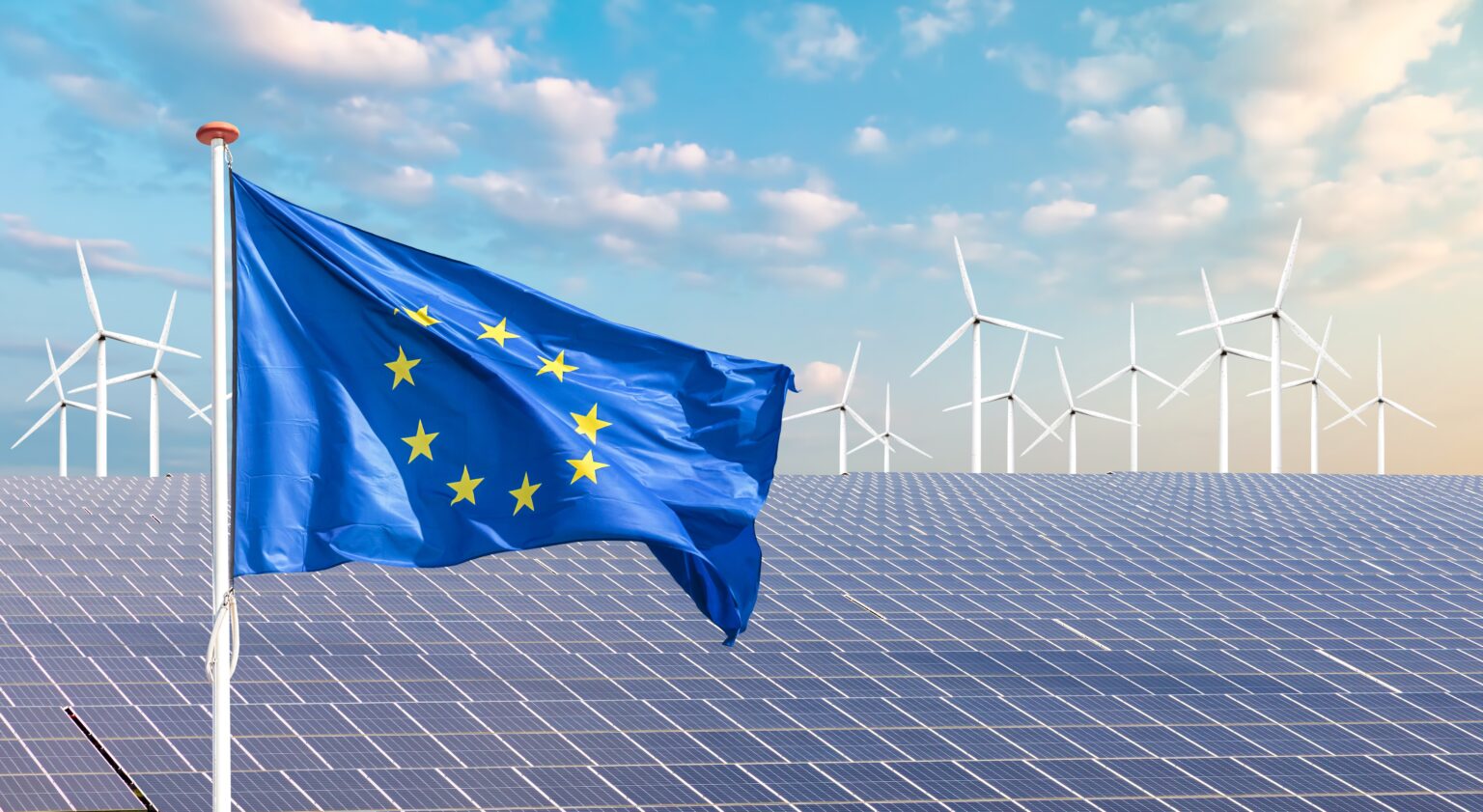The REPowerEU plan aims to revolutionise Europe’s energy landscape with ambitious renewable energy and energy saving targets but faces obstacles such as high energy costs and dependence on foreign raw materials. Will Europe succeed in building a green future without compromising its industry?
Launched by the European Union in May 2022 in response to the Russian invasion of Ukraine, the REPowerEU plan aims to reshape Europe’s energy strategy by focusing on four pillars:
1) Increasing production from renewable sources. The aim is to be able to cover 42.5% of demand in 2030 with clean energy. Starting with photovoltaic and wind energy, essential both for domestic use and for the definitive decarbonisation of industry, but also thanks to the promotion of new sources such as hydrogen (for which the EU plans to create hydrogen valleys to distribute energy between industries and achieve the objective of ten million tonnes of renewable hydrogen per year by 2030), biogas and biomethane (with a target set at 35 billion cubic metres) and geothermal energy.
2) Energy saving: encouraging actions to reduce consumption and waste, both in industrial production and in the energy efficiency of buildings and in the dissemination of good practices such as lowering the temperature of heating, raising the temperature of air conditioning and reducing consumption during daylight hours and, above all, at peak times. Not to mention rethinking the energy-intensive transport system by supporting zero-emission mobility and more sustainable infrastructures such as rail, metro and green buses.
3) Reforms and rationalisation of investments: To implement the EU’s REPowerEU plan, the EU has earmarked more than ¤ 210 billion over five years, plus 225 billion from Member States’ National Recovery and Resilience Plans (NRPs). This is a huge amount of money that will be used to support energy savings and the increase of renewable energy. But financial resources alone, however impressive, are not enough and a real cultural paradigm shift is needed at all levels: capacity to adapt the Plan to emerging needs and reduce bureaucracy, digitise energy grids and decentralise them, build smart grids that minimise overloads, involve citizens and households as ‘prosumers’ and incentivise technological solutions for electricity storage.
4) Diversification of fossil fuel suppliers: To reduce energy dependence on Russia and ensure greater resilience in the event of new geopolitical crises, the EU has intensified relations with allied countries such as the US, Canada and Norway and strengthened strategic cooperation with producers such as Algeria, Qatar, Nigeria and Angola. It is also increasing its use of liquefied natural gas (LNG) with countries such as Egypt and Israel.
It must be said that while the first three pillars of the Plan will take many years to become a reality, the last pillar is already well advanced. But the motivations here are not environmental protection or the climate crisis. The reasons are essentially political: to weaken Russia and, indirectly, to support Ukraine. And in a context of war, the EU has managed to plummet Russia’s natural gas imports from 45 per cent to 15 percent, according to data published by the International Energy Agency (IEA).
Lights and shadows for renewable energies ‘made in Europe’.
In several places, the report highlights how high energy costs and lack of adequate infrastructure contribute to slowing economic growth in Europe.
The energy-intensive industrial system suffers from competition from lower-cost countries and volatile energy prices increase financial burdens, adding further uncertainty to investments.
Why not focus even more on the ‘green’ conversion of energy production?
Although Europe is a leader in clean technology innovation, its ecosystem has weaknesses that prevent it from fully capitalising on this competitive advantage. The EU accounts for more than one fifth of global innovation in clean technologies, and half of new technologies are in the launch or start-up phase.
However, there is a worrying slowdown in the rate of patenting of low-carbon technologies. For example, between 2015 and 2019, Europe accounted for 65% of venture capital investments in hydrogen and fuel cells, but this share fell to 10% between 2020 and 2022.
Yet Europe is the world’s second largest market in demand for solar, wind and electric vehicles; how is it failing to maintain a stable lead? Let’s take another example and look at the photovoltaic sector: the EU has ceded almost all production to China. Even in the wind energy sector, although still the leader in turbine assembly, Europe’s market share fell from 58% to 30% between 2017 and 2022. European production of technologies such as electrolysers and carbon capture systems is hampered by higher construction costs and lengthy authorisation processes. In addition, the EU is highly dependent on imports of essential raw materials, such as rare earths, as it produces only 1-5% of the more than 40 raw materials it needs domestically.
Another critical issue is the size of clean tech companies, which on average are smaller in the EU than the US and Chinese giants. This results in higher financing barriers, compounded by fragmented regulation that hinders growth and the transition from development to large-scale production.
In conclusion, while the EU has the ambition to preserve and expand its production capacity in the clean energy sector, it risks progressive deindustrialisation in the same field, as many companies choose to downsize, relocate or close their operations due to an unfavourable market environment.
Highly ambitious ‘green’ targets and the corresponding large investments are counterbalanced by China’s rapid growth and the consolidation of the United States in the global market for clean technologies, which has a negative impact on Europe’s trade balance.
European policy thus faces an epochal challenge: to achieve energy independence without dismantling its industrial system.



